Approaches to growing vegetables; Rows, raised beds, SFG, Permaculture, Hügelkultur, and Cottage gardens
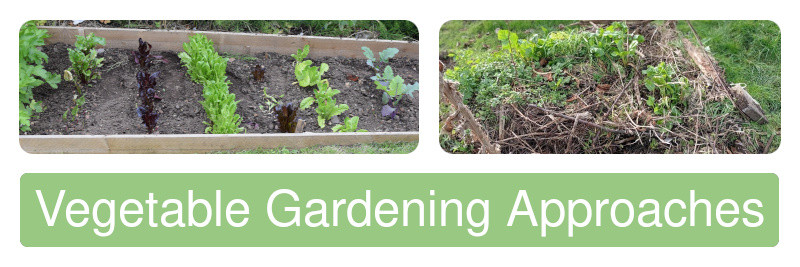
If you want to grow food, then it may be interesting to examine agricultural methods worldwide to help you decide the best way for you. From straight rows to raised beds to Square Foot Gardening, you can look at Permaculture, Lunar gardening, and Hügel beds. It is important not to grow the same vegetable on the same plot of the ground every day to avoid pests and soil depletion. If this sounds like gobbledegook, keep reading for five popular methods of growing vegetables in the 21st century.
5 Methods to try
Rows
This is the traditional method we observe in farms seen as we drive past, or allotment gardening, where a piece of ground is tilled annually and then planted with seeds. Lettuce, cabbage, carrots, and even melons and squash are grown like this. Rows seem organized, productive, and tidy, and they can be, but they also depend heavily on artificial fertilizers and intensive watering. This system relies on the farmer keeping track of a crop rotation system, so a different plant grows in each field each year to avoid pests and to stop depleting the soil.
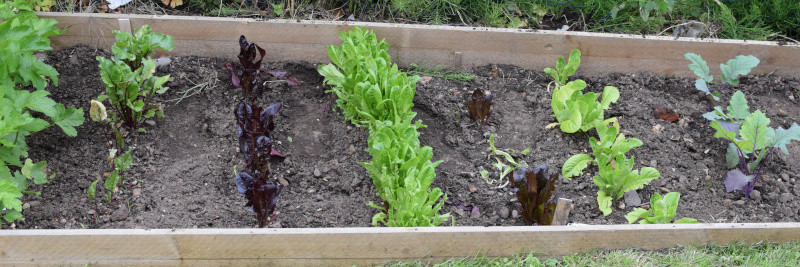
You need to dig every year, and current horticultural theory advocates that this may not be best for the health of your soil, and weeds always find your vegetable bed. You can add companion plants eg next to carrots, plant a nasturtium flower that will attract the pests of the plant you want to protect. Carrot root flies will always go for a nasturtium flower, saving your carrots from weeds.
Row plantings are easy to weed, as you can run a hoe between the rows.
Cottage Gardens
When you think of a thatched cottage in the countryside, with a herb garden attached and lots of fresh flowers to cut for vases, as well as your salads, vegetables, and maybe some medicinal plants, this is known as a cottage garden. They are famous for delighting all five senses; the colour of the flowers looks fantastic, and the fresh taste of herbs, vegetables, and edible fruit and flowers is incredible. Birdsong delights the ear from flying creatures that adore these gardens for the diversity of the planting. You can touch soft leaves of Mullein or sage or picnic on the freshly cut lawn or a wildflower lawn while sniffing all the herbs and flowers for each season and fresh vegetables you pick. Doctors used herbs for medicinal use, too, so these gardens fed the occupants of the house and kept them healthy and sane while protecting the wildlife as part of a mini-ecosystem in the backyard.
Raised beds
These often use railway sleepers or large pieces of wood as borders, which are filled deep with gravel, compost, soil, and manure to allow gardeners to place different plants in different sections. The benefits are deeper soil for long-rooted plants, being able to top mulch with compost or manure annually to maintain fertility, and retaining moisture due to the depth of the beds. If you have several, it is easy to alternate plants, so one year can be hungry tomatoes and aubergines (eggplants), and the next can be beans or peas, so it is easy to keep your crop rotation system for each bed.
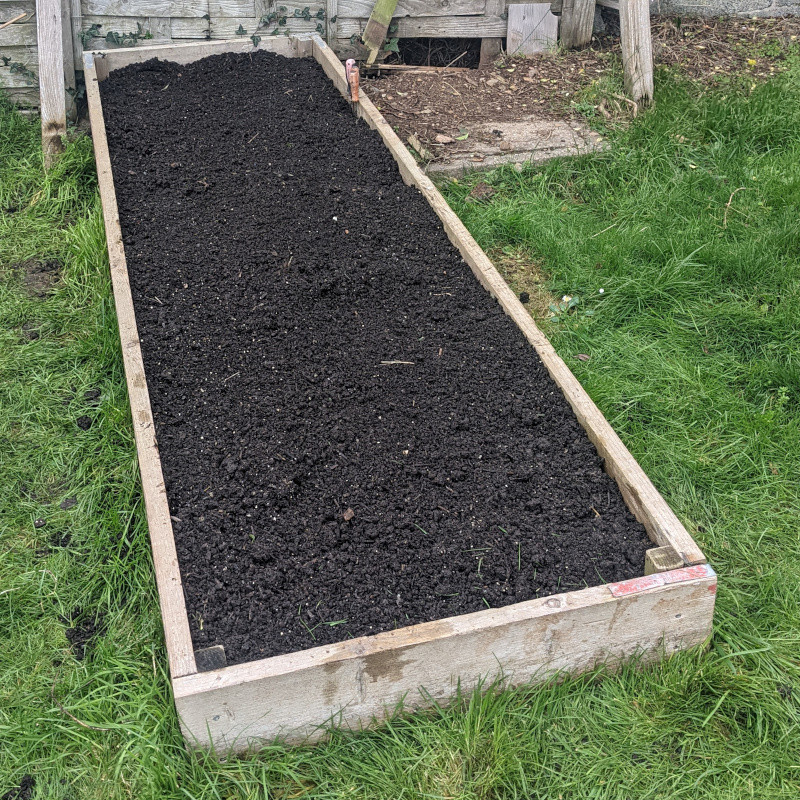
SFG: Square foot gardening
As you saw last week, this method allows you to grow food in an urban setting with minimum weeding and high yield, so it is a really easy method for the beginner. Instead of the traditional long straight rows of vegetable growing, this method is based on dividing your space into squares of exactly one square foot. Designed by an engineer turned TV presenter in the US, Mel Batholomew presented this method as a way to revolutionize the row system by placing plants in pre-measured squares. He claimed it was more time efficient, soil efficient and would produce a certain number of plants in a defined area. By planting closely, this method excludes weeds, and this helps to retain moisture too.
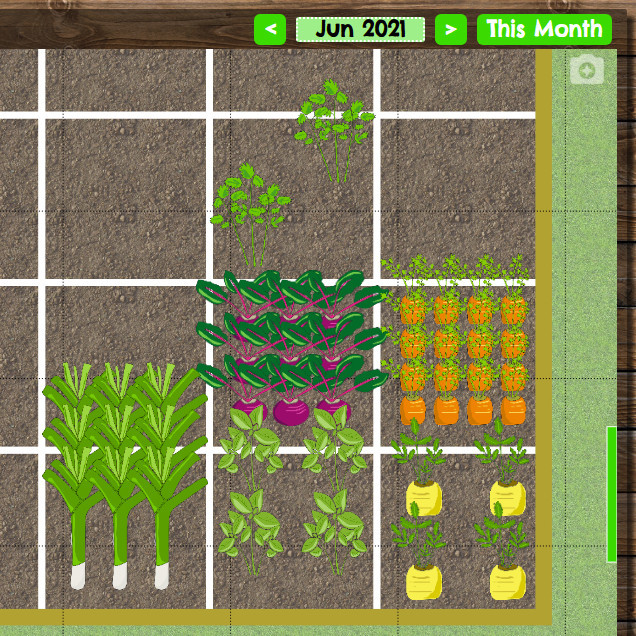
Dividing your space couldn’t be easier. After digging initially, measure the area into squares and rake it well. Then use a trellis or string to mark out the squares. Then plant a prescribed number of seeds per square depending o the plant – large ones like cauliflowers contain just one vegetable, but carrots, radishes, and lettuces will vary on the finished growth expected, and you plant either one seed, or 4, 9, or 14 in this system. Another advantage of SFG is that you do not compact the soil by walking on it.
Permaculture, including Hügel beds
Treating your growing space as a complete habitat is what permaculture is all about. It mimics the best practice of Mother Nature, like using fallen leaves as a covering for overwintering insects, caterpillars, and worms, or providing water supplies for thirsty birds and aquatic life, and allowing nature to decompose fallen logs and composting waste to enable the soil to retain fertility over time. The term was defined after an article was printed in 1976 in Tasmania’s Organic Farmer and Gardener, by Bill Mollison and David Holmgren, who explained how it worked. From their observations in the wild in Australia, human intervention was unnecessary, and growing your food sustainably meant imitating what would happen naturally. The advantages are obvious. The land manages itself, and watering is cut to a minimum, using forest gardening or Hügel beds.
What are Hügel beds?
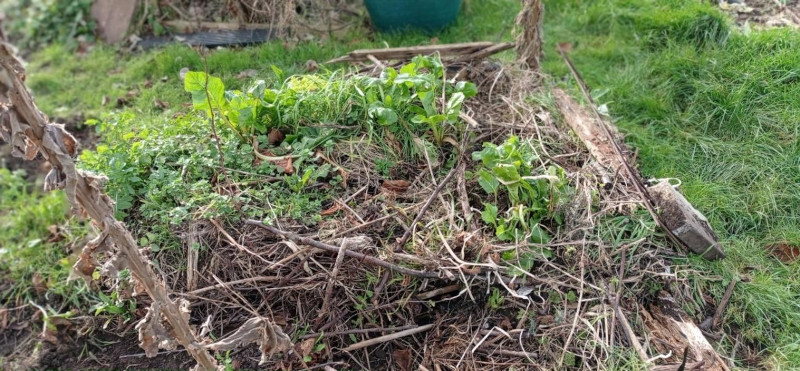
This bed has collapsed to about 2 feet high over the years and currently has overwintering spinach, rocket, the odd dandelion, and Mullein flower stalks.
Also known as “mound” beds, these are common in central Europe, particularly in Germany and Austria, and they can be really steep, up to 6 feet tall! The word “Hügelkultur“ describes a hillock or mound of piled wood, leaves, kitchen waste, and compost with sloped walls that allow for planting on both sloping sides. The benefits are that you make a piece of land more fertile for growing veg, and it retains moisture, so less watering!
To make one, you need to dig out a long trench in your soil and set aside these top layers of soil, with grass to place on the heap later. Then fill the trench with any available branches and logs of wood. Put harder wood at the bottom, followed by softer wood. This slow-rotting wood becomes the basis of moisture retention, as rotten wood soaks up any rainwater available and stores it, allowing plants to access water as required.
The next layer can be thinner twigs and sawdust, wood chips, dried leaves, and shredded paper material to fill the gaps in the log layer. On top of this, add a green layer of waste which can be waste kitchen materials like apple cores, fruit peelings, etc. Lawn cuttings are perfect on this layer too, because grass decomposes quickly and will help to heat up the rooting wood. Keep adding layers of brown and green waste and then use the excavated soil you dug out earlier and replace this on the top. However, it does need to be upside down so you retain the goodness but not the grass. It will all rot down over time.
The only downside of this method is that in the first year, it is still settling down and not much nitrogen is available for plants. So make sure you plant beans, peas, or clover in the first year, which put nitrogen into the soil. After that, your Hügel bed will survive almost without you. Just water it now and then in a drought period if crops look really dry.
Conclusion
So, which method will work for you? You may find that a mixture of all these work well in an urban garden – a raised bed with an SFG system for vegetables, a composting system, and a pond for wildlife to drink from may suit a permaculture style. The benefits of herbs and medicinal plants with colourful flower borders for a traditional cottage garden style can relieve everyday stresses. Next week, we will examine the easiest vegetables to grow in the UK to help you choose seeds now that spring is in the air.


